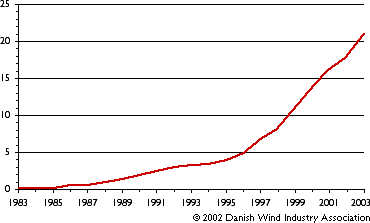The science of the hydrogen economy
An alluring fact is that the chemical energy in
hydrogen can be released without producing greenhouse gasses or anything
toxic or polluting. An alluring fantasy is that hydrogen could free the
United States from the economic stranglehold of the Arab world. The
complete picture is more complicated.
There is a widespread misconception that hydrogen is
a source of energy. It is not. Hydrogen
is a carrier of energy produced by some other means.
The underlying science

Before describing the science of the hydrogen
economy, a review of the underlying science seems appropriate.
Energy sources

Only three sources of energy are available to
humanity in significant quantities. They are:
1) Energy from fossil fuel, also called ancient
sunlight
2) Energy from recent or current sunlight, which includes hydro, wind,
solar, etc.
3) Nuclear energy, including fission and fusion power
Ancient sunlight, in the form of fossil fuel,
supplies most of the energy used in the United States. When the fossil
fuel energy is gone, only energy
from current sunlight and nuclear power will be available. This
limit is not imposed by limitations of available technology. This limit is
imposed by physics. No Manhattan Project or Apollo Program can change
that.
Nuclear power in the form of controlled fission
produces 20% of the electrical power used in the United States. Controlled
fusion might be an energy source in the future. Atomic bombs and hydrogen
bombs are examples of uncontrolled fission and fusion, respectively.
Energy transformations

One form of energy can be transformed into another.
The chemical energy in gasoline can be converted to mechanical energy
(automobile engine). The chemical energy in coal can be converted to heat
(fire) or electricity (electric power plant). Light can be converted to
chemical energy (living green plants).
In general, electricity is the most useful form of
energy because it is so easily transformed into other forms of energy.
Here are some examples: Electricity can be converted to mechanical energy
(electric motors) and back again (electric generators). Electricity can be
converted to light (light bulbs) and back again (photovoltaic cells).
Electricity can be used make hydrogen (electrolysis) and hydrogen can be
used to make electricity (fuel cells).
Some of the transformations are easy. Electric
motors and generators are very efficient at 95%. It is easy to convert
electrical energy into heat (a hair dryer does this with nearly 100%
efficiency). But it is hard to convert heat back to electricity. A coal
fired power plant achieves only 30% efficiency with the pollution-reducing scrubbers on. Some new natural gas fired turbines can
make electricity at 60% efficiency. Inefficiency is tolerable because
electricity is so useful.
Energy transformation losses

It is never possible to to do an energy
transformation with an efficiency greater than 100%. To do so would
violate the rules of thermodynamics. This point needs to be belabored
because some believe that electrolysis can release chemical energy in the
form of hydrogen with an efficiency greater than 100%. There is no way to
release hydrogen from water without expending energy.
Energy measurement

Energy is often not measured in a consistent way.
When you diet you measure energy in calories. When you buy an air
conditioner or furnace you measure energy in BTUs. When you pay your
electricity bill you measure energy in kilowatt hours. When you pay your
gas bill you measure energy in therms. When you buy a car you measure
energy in horsepower. And engineers and scientists measure energy in
joules.
| Oil |
894.0 |
39.00% |
| Natural Gas |
601.0 |
26.20% |
| Coal |
554.0 |
24.10% |
| Nuclear Electric Power |
186.0 |
8.10% |
| Hydro Electric Power |
58.0 |
2.50% |
| Wind Electric Power |
0.8 |
0.03% |
| -- total |
2,293.8 |
|
This chart shows the annual energy use in the United
States in a consistent way. The energy unit used for all sources is one
million metric tons of oil energy equivalent. The total, 2,298,000,000
metric tons is hard to relate to. It works out to 47 pounds of oil per
person per day. These numbers come from the British Petroleum
Statistical Review of World Energy of 2003. [1]
Notice that hydro and wind electricity are the only sustainable energy
sources but they account for only 2.53% of the total. Solar power,
geothermal power, etc. are even less significant than wind power on this
scale. Hydroelectric power is already almost fully exploited but there is
potential to greatly expand wind power. [2]
New energy sources

 Other
countries, notably Germany, Denmark, and Spain have already invested
heavily in this technology. Denmark already gets 21% of its electricity
from wind turbines. Wind power is already economical enough to replace
fossil fuel. Solar power may soon be economical enough to replace fossil
fuel too. The problem is that wind or sun may not be available when
electricity is needed. An economical method to store large quantities of
electricity is sorely needed. Other
countries, notably Germany, Denmark, and Spain have already invested
heavily in this technology. Denmark already gets 21% of its electricity
from wind turbines. Wind power is already economical enough to replace
fossil fuel. Solar power may soon be economical enough to replace fossil
fuel too. The problem is that wind or sun may not be available when
electricity is needed. An economical method to store large quantities of
electricity is sorely needed.
Oil has been the fuel of choice for automobiles,
trucks, railroads, and airplanes. Advocates of the hydrogen economy
suggest that oil can be replaced by hydrogen. They point out that hydrogen
can be derived from sustainable energy sources.

 [1] http://www.bp.com/ British
Petroleum (BP) is a major oil company that publishes oil reserves data
from the Oil and Gas Journal in its annual Statistical Review of
World Energy 2003. The Review is widely referenced because it
is convenient, complete, colorful and very well done. Information about
hydro electricity, coal, and nuclear power are also included. [1] http://www.bp.com/ British
Petroleum (BP) is a major oil company that publishes oil reserves data
from the Oil and Gas Journal in its annual Statistical Review of
World Energy 2003. The Review is widely referenced because it
is convenient, complete, colorful and very well done. Information about
hydro electricity, coal, and nuclear power are also included.
[2] http://www.windpower.org/en/core.htm
This is the most complete and authoritative website devoted to wind power.

|
 Other
countries, notably Germany, Denmark, and Spain have already invested
heavily in this technology. Denmark already gets 21% of its electricity
from wind turbines. Wind power is already economical enough to replace
fossil fuel. Solar power may soon be economical enough to replace fossil
fuel too. The problem is that wind or sun may not be available when
electricity is needed. An economical method to store large quantities of
electricity is sorely needed.
Other
countries, notably Germany, Denmark, and Spain have already invested
heavily in this technology. Denmark already gets 21% of its electricity
from wind turbines. Wind power is already economical enough to replace
fossil fuel. Solar power may soon be economical enough to replace fossil
fuel too. The problem is that wind or sun may not be available when
electricity is needed. An economical method to store large quantities of
electricity is sorely needed.![]()
 [1] http://www.bp.com/ British
Petroleum (BP) is a major oil company that publishes oil reserves data
from the Oil and Gas Journal in its annual Statistical Review of
World Energy 2003. The Review is widely referenced because it
is convenient, complete, colorful and very well done. Information about
hydro electricity, coal, and nuclear power are also included.
[1] http://www.bp.com/ British
Petroleum (BP) is a major oil company that publishes oil reserves data
from the Oil and Gas Journal in its annual Statistical Review of
World Energy 2003. The Review is widely referenced because it
is convenient, complete, colorful and very well done. Information about
hydro electricity, coal, and nuclear power are also included.